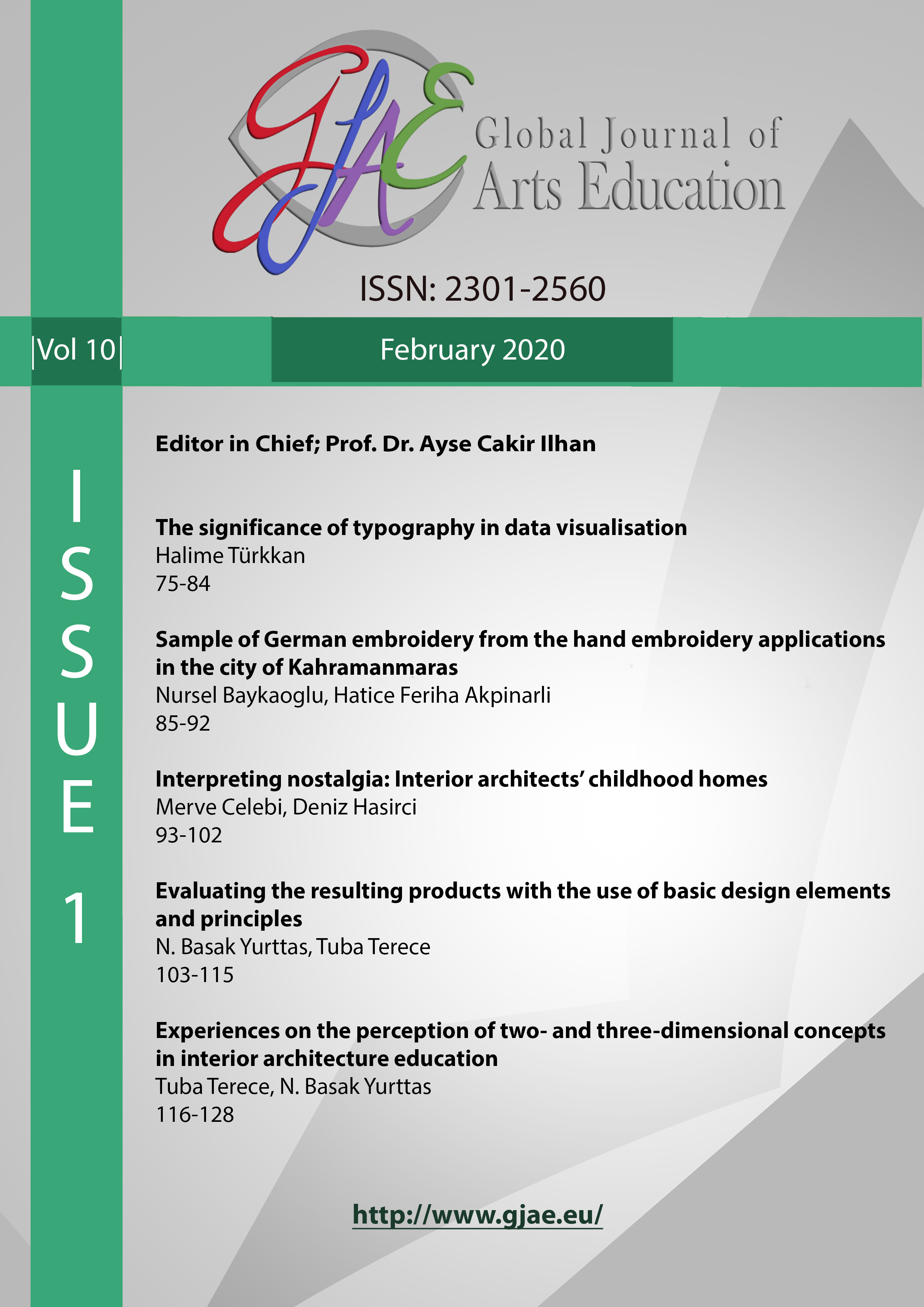The significance of typography in data visualisation
Main Article Content
Abstract
With the development of technology and the dominance of the digital world, typography has become a critical issue. Information design systems are considered as one of the significant areas of graphic design. Big data provides important information on data visualisation. While presenting this information, the value that the script adds to the design will be examined in this study. The choice of typefaces, leading and kerning in typography, type hierarchy, harmony, balance, unity, the contrast between the visual elements and typography are the critical components of data visualisation. ‘Communication designers often err on the side of providing features that entertain and visually please audience's ability to receive or understand the message, in the hope that messages will be understood because they are associated with appealing features. Although designers often concentrate on visuals and aesthetics, at other times they hope to attract viewers by focusing clearly on valuable content. But too often both approaches impair the audience's ability to receive or understand the message’. In support of what Jacobson mentioned above in his book titled Information Design, this study aims to emphasise the undeniable importance of typography in data visualisation designed for informative purposes.
Keywords: Typography, design, data visualisation
Downloads
Article Details

This work is licensed under a Creative Commons Attribution 4.0 International License.
Authors who publish with this journal agree to the following terms:
- Authors retain copyright and grant the journal right of first publication with the work simultaneously licensed under a Creative Commons Attribution License that allows others to share the work with an acknowledgement of the work's authorship and initial publication in this journal.
- Authors are able to enter into separate, additional contractual arrangements for the non-exclusive distribution of the journal's published version of the work (e.g., post it to an institutional repository or publish it in a book), with an acknowledgement of its initial publication in this journal.
- Authors are permitted and encouraged to post their work online (e.g., in institutional repositories or on their website) prior to and during the submission process, as it can lead to productive exchanges, as well as earlier and greater citation of published work (See The Effect of Open Access).

